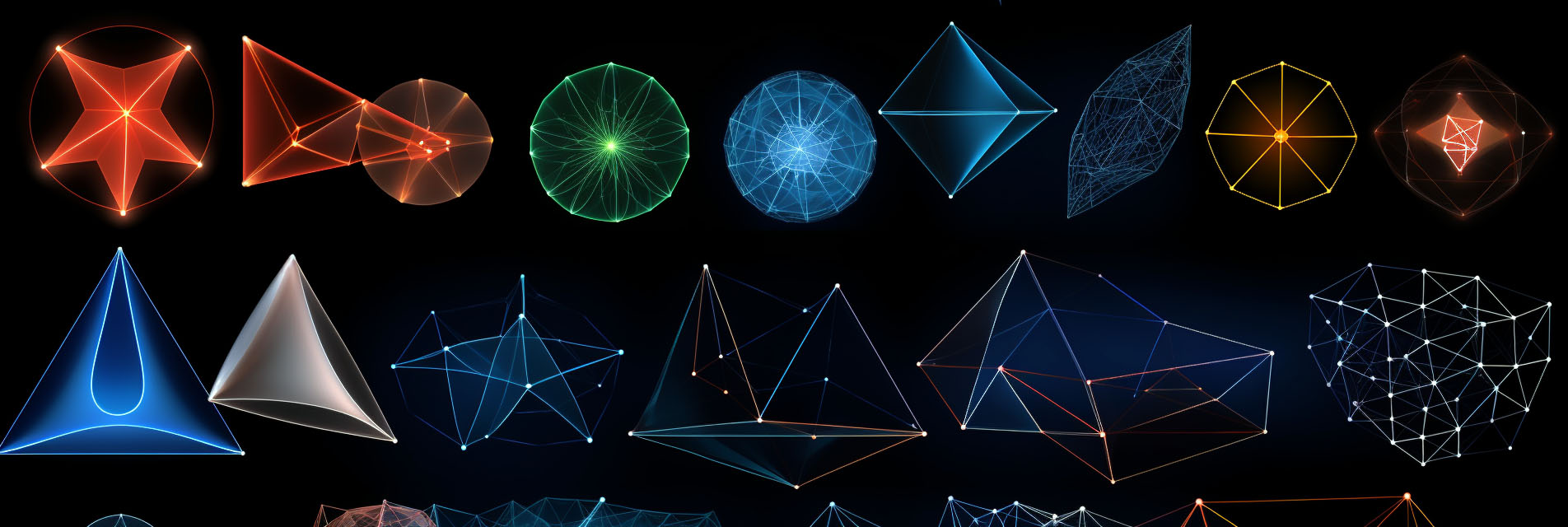

Unraveling Geometry's Mysteries: AI and the Quest to Decode Atomic Shapes
The fusion of artificial intelligence (AI) with mathematics promises to usher in a transformative era in mathematical research. AI, with its proficiency in handling vast datasets and deciphering intricate patterns, offers tools that can greatly augment the capabilities of researchers. Complex mathematical problems, which traditionally might take years of manual computation or remain unsolved due to their vast complexity, can be approached using AI-driven methods that rapidly traverse solution spaces. Additionally, machine learning models can be trained on existing mathematical data, enabling them to predict or conjecture new theorems or insights, effectively providing researchers with innovative pathways and hypotheses to explore.
Beyond just computational power, AI can bring a new dimension of visualization and intuition to intricate mathematical concepts, especially in higher dimensions or in areas where human intuition is limited. For instance, neural networks can be trained to visualize multi-dimensional geometrical structures or represent solutions to differential equations, offering a fresh perspective on established problems. As these AI tools become more integrated into the research process, mathematicians will not only be equipped to tackle long-standing enigmas but will also have the means to venture into previously uncharted territories of mathematical thought.
Announced October 4, 2023, mathematicians from Imperial College London and the University of Nottingham have embarked on a groundbreaking journey, harnessing the power of machine learning to delve deeper into the realm of geometry. Their pioneering work, as detailed in Nature Communications, revolves around understanding 'atomic shapes'—the essential pieces that constitute higher-dimensional geometrical structures. The integration of artificial intelligence in this exploration signifies a paradigm shift in mathematical research, offering a fresh perspective on traditional problems and expediting the discovery process.
Central to their research are the Fano varieties, which can be envisioned as the building blocks or "atoms" of shapes. While the concept of these varieties is not new, classifying them based on shared properties has posed significant challenges. Machine learning, known for its proficiency in deciphering patterns within expansive datasets, emerged as the solution. By feeding the AI model with sample data, the team unlocked previously unrecognized patterns in the Fano varieties. Impressively, their AI-driven approach resulted in a staggering 99% accuracy in predicting the dimensions of Fano varieties, based on their quantum periods.
This breakthrough not only underscores the transformative potential of AI in unveiling new mathematical concepts but also suggests a symbiotic relationship where mathematical data can reciprocally refine AI models. Unlike the noisy, real-world data traditionally used to train AI models, mathematical data is pristine and devoid of random interference. Such "pure" datasets, laden with inherent patterns and structures, can serve as the ideal training grounds for machine learning models, enhancing their pattern-recognition capabilities.
Webdesk AI News : AI Shape Geometry, October 4, 2023